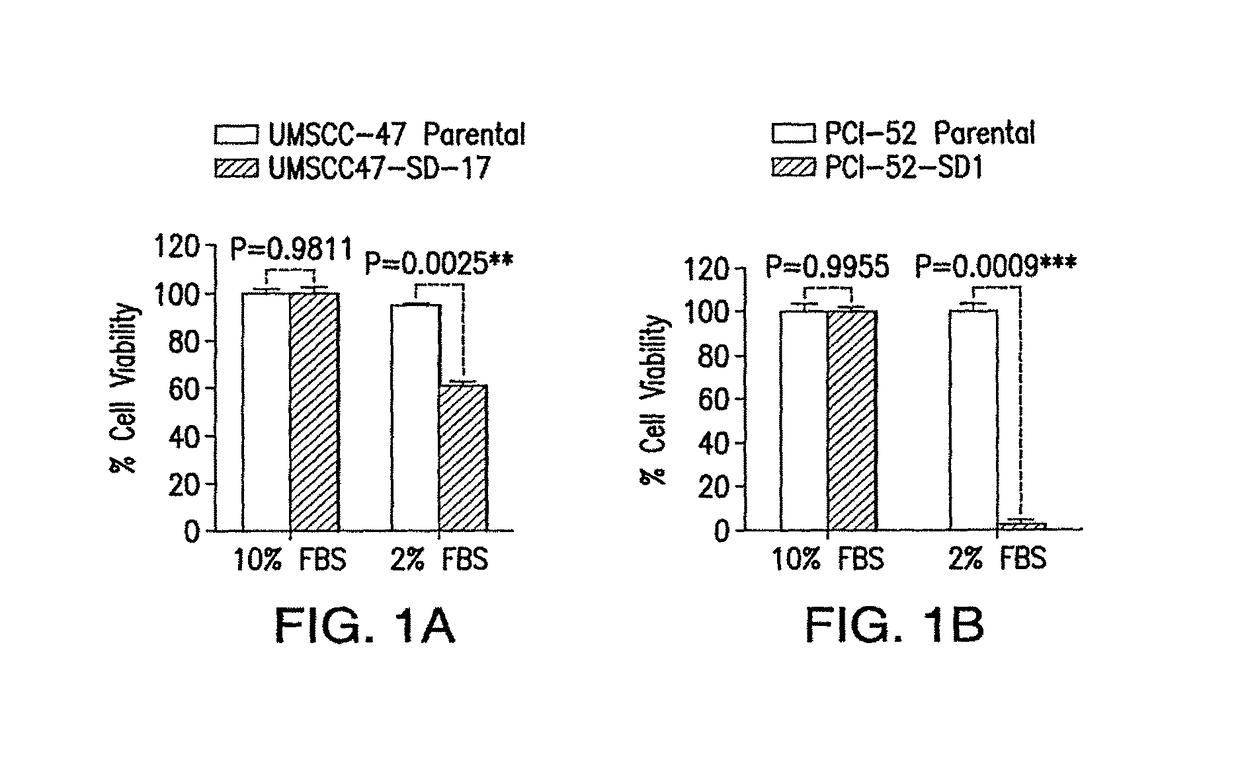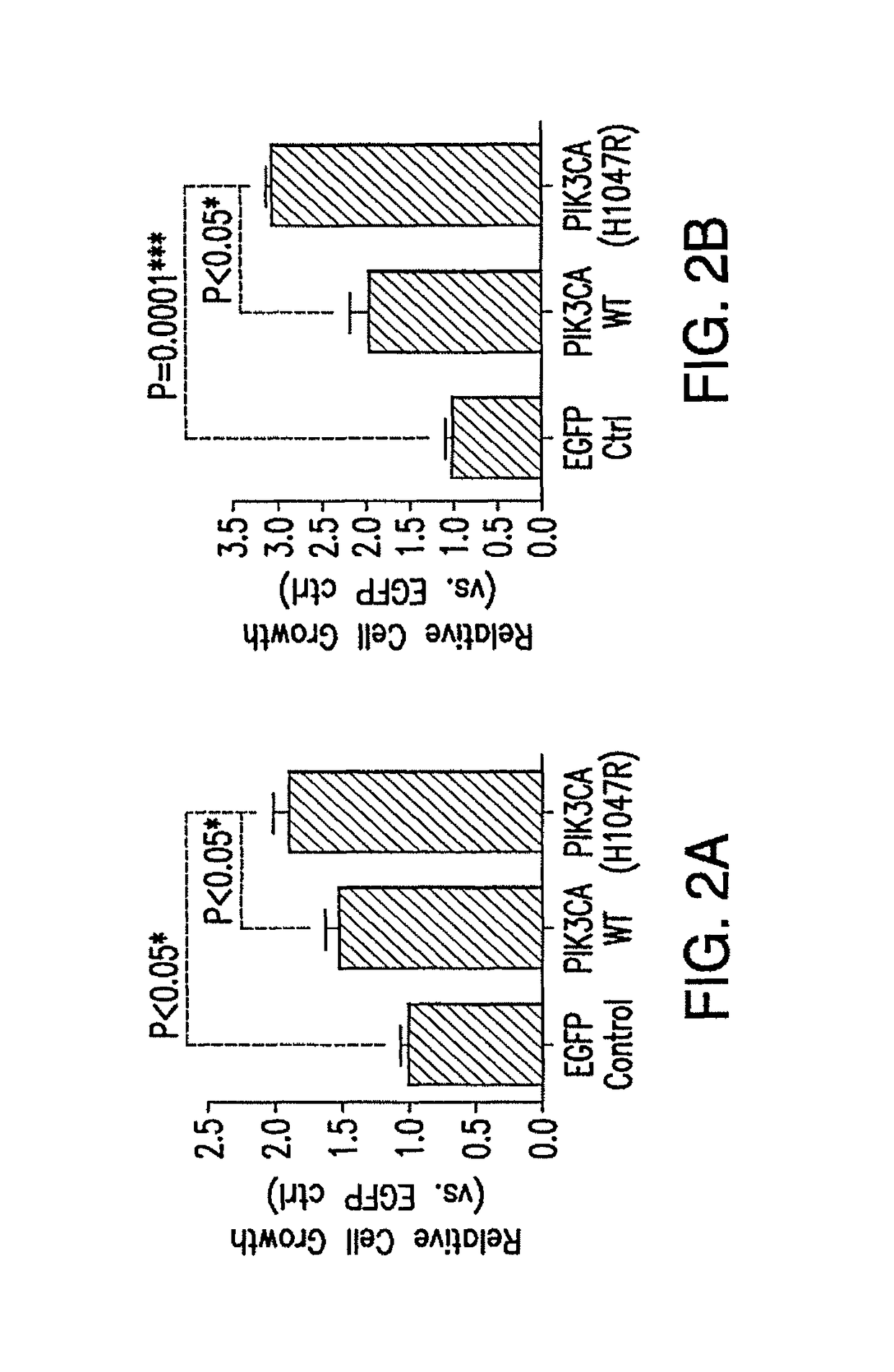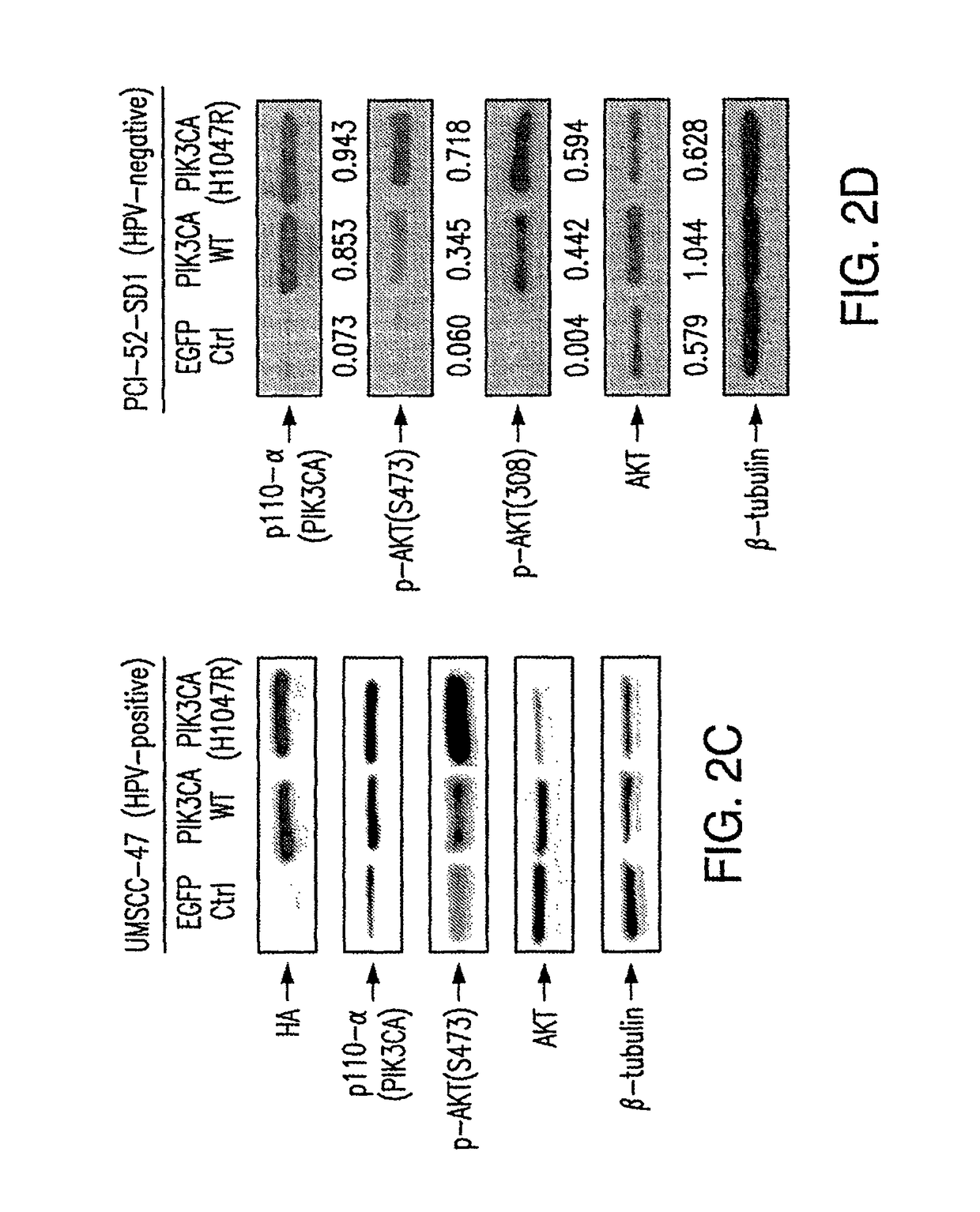Functional genomics screening platform for head and neck cancer
a technology of functional genomics and head and neck cancer, applied in tumor/cancer cells, biochemistry apparatus and processes, organic active ingredients, etc., can solve the problems of uncontrolled cell growth and cancer formation, signaling dysregulation, etc., and achieve enhanced cell survival and proliferation, high serum-dependent
- Summary
- Abstract
- Description
- Claims
- Application Information
AI Technical Summary
Benefits of technology
Problems solved by technology
Method used
Image
Examples
example 2
7. RECEPTOR PROTEIN TYROSINE PHOSPHATASE MUTATIONS IN HEAD AND NECK CANCER
7.1 Materials and Methods
[0079]Mutation Databases.
[0080]HNSCC mutation analyses were based on the published whole exome sequencing data on 74 HNSCC tumors [10] and the TCGA. PTPR and PTPN mutation rates (% mutated tumors) were calculated by the actual % of tumors harboring non-synonymous mutations of PTPR or PTPN members. For multi-cancer analysis, mutation data (from whole-exome sequencing) were obtained from the cBio portal [11].
[0081]Cell Cultures.
[0082]All HNSCC cell lines were genotypically verified and maintained in complete DMEM medium containing 10% fetal calf serum, IX penicillin / streptomycin solution (Invitrogen, Carlsbad, USA) in a humidified cell incubator at 37° C., 5% CO2. 686LN cells were obtained from Dr. Georgia Chen and the PCI-52-SD1 cell line was obtained by clonal selection of the parental PCI-52 cell line (University of Pittsburgh Cancer Institute) by rounds of graded serum-selection. In...
example 3
8. PTPR MUTATION ENHANCES SENSITIVITY TO STAT3 PATHWAY INHIBITORS
[0114]To determine if PTPR mutation enhances sensitivity to STAT3 pathway inhibitors, HNSCC cell lines harboring endogenous PTPR mutation were compared with cell lines containing WT PTPRs. Cells were plated at equal density (3×104 / well), treated with various concentration of the STAT3 inhibitors, Stattic (Sigma-Aldrich, MO), a small molecule inhibitor of STAT3 activation and dimerization, or JSI-124 (Calbiochem, MA) for 24 hours, followed by MTT assay (n=3). EC50 values were determined, with extrapolation at 20 μM, by GraphPad Prism 5 software. As shown in FIG. 1I, cells with endogenous mutant PTPRD (PE / CA-PJ49, I1821V) were more sensitive to the growth inhibitory effects of Stattic compared with HNSCC cell lines with WT PTPRD [PE / CAPJ34(Clone 12)]. These results show that mutations of the PTPR family, specifically PTPRT and PTPRD, lead to increased STAT3 activation in HNSCC.
PUM
| Property | Measurement | Unit |
|---|---|---|
| concentration | aaaaa | aaaaa |
| OD | aaaaa | aaaaa |
| Frequencies | aaaaa | aaaaa |
Abstract
Description
Claims
Application Information
 Login to View More
Login to View More - R&D
- Intellectual Property
- Life Sciences
- Materials
- Tech Scout
- Unparalleled Data Quality
- Higher Quality Content
- 60% Fewer Hallucinations
Browse by: Latest US Patents, China's latest patents, Technical Efficacy Thesaurus, Application Domain, Technology Topic, Popular Technical Reports.
© 2025 PatSnap. All rights reserved.Legal|Privacy policy|Modern Slavery Act Transparency Statement|Sitemap|About US| Contact US: help@patsnap.com



